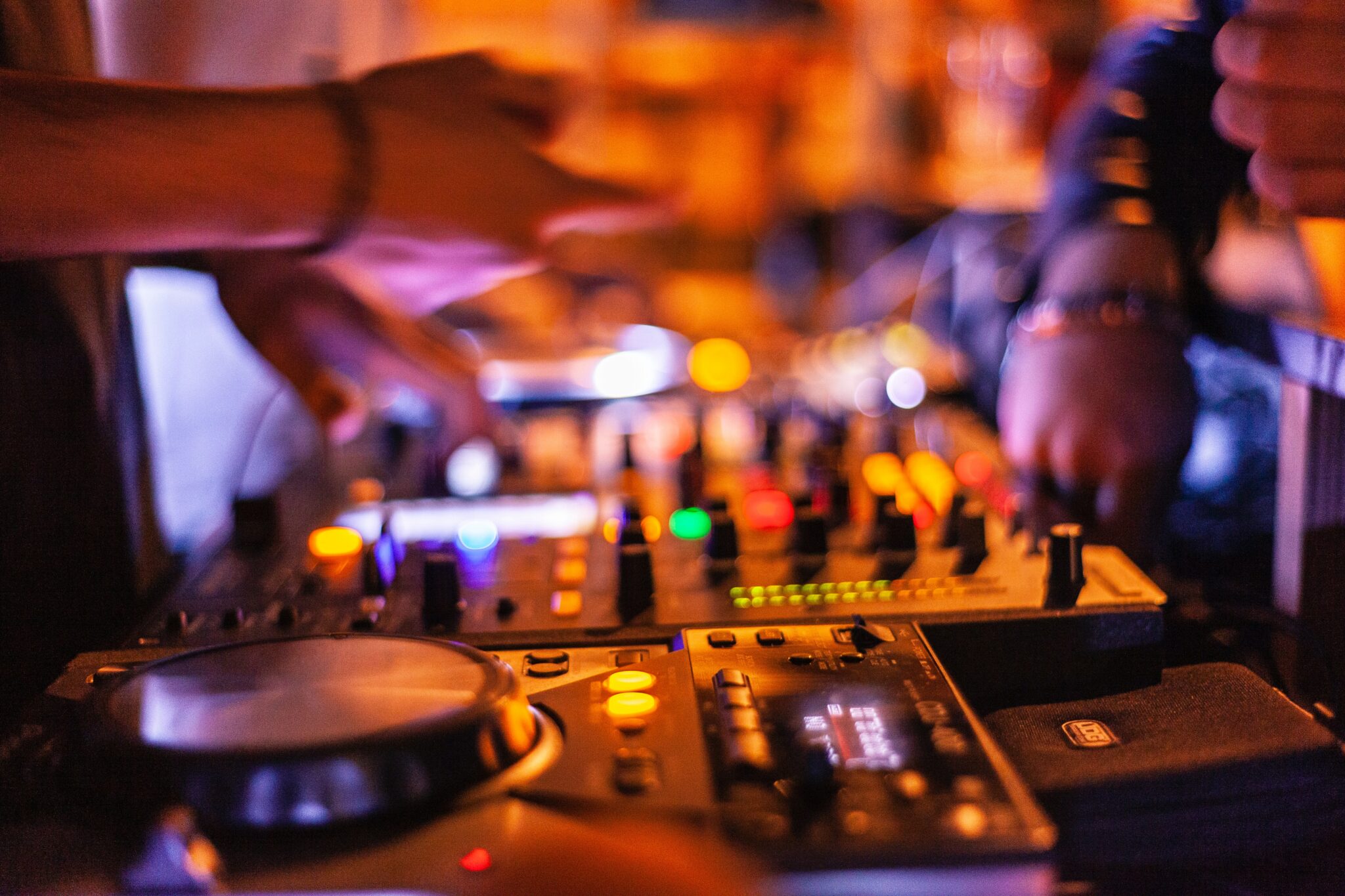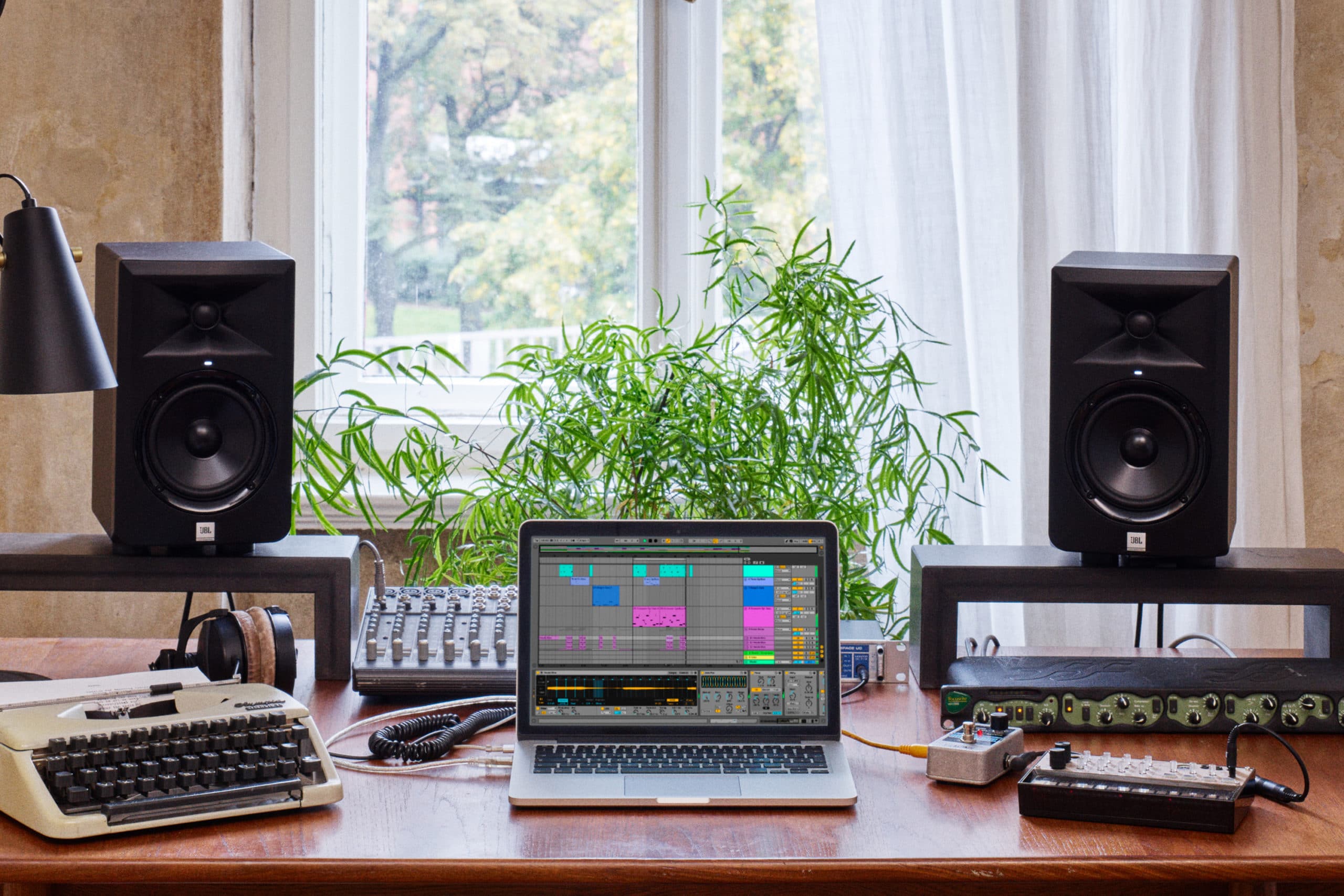
DJ – Vinyl vs WAV vs MP3
DJs Using Vinyl
DJing on vinyl is a traditional and popular form of DJing that involves playing music on vinyl records using a DJ turntable. Vinyl records have a unique sound and feel that many DJs and music fans find appealing, and playing music on vinyl records allows DJs to showcase their skills and creativity in a way that is not possible with digital DJing.
In order to DJ on vinyl, a DJ needs a set of DJ turntables, a DJ mixer, and a collection of vinyl records. The DJ turntables are used to play the records, while the DJ mixer is used to blend the sounds of the two turntables and add effects such as equalization and crossfading. The DJ must manually manipulate the turntables and mixer to create a seamless mix of music, which requires a high level of skill and experience.
Despite the rise of digital DJing, vinyl DJing remains popular among many DJs and music fans who appreciate the tactile and sonic qualities of vinyl records, as well as the art of DJing itself. Whether you are a seasoned vinyl DJ or just starting out, DJing on vinyl can be a rewarding and fulfilling experience.
Digital Deejaying
Digital DJing is a modern form of DJing that involves playing music using digital audio files and DJ software. Instead of playing physical vinyl records on turntables, digital DJs use laptops, DJ controllers, or other digital devices to access and play music stored in digital audio files, such as MP3s or WAVs.
Digital DJing has become increasingly popular in recent years due to its ease of use and versatility. With digital DJing, DJs have access to vast libraries of music, and they can easily search for, preview, and play tracks without having to physically handle records. They can also use DJ software to automate many of the tasks that were once performed manually, such as beatmatching and looping, freeing up the DJ to focus on other aspects of their performance.
While digital DJing may not have the same tactile and sonic qualities as vinyl DJing, it offers many advantages, including greater accessibility, ease of use, and the ability to manipulate digital audio files in ways that are not possible with vinyl records. Whether you are a beginner DJ or a seasoned professional, digital DJing is a great way to get started and hone your DJing skills.
WAV vs MP3
When it comes to DJing, both WAV and MP3 files have their pros and cons. Here are some key differences between the two formats:
WAV:
- WAV (Waveform Audio File Format) is a high-quality, lossless audio format that provides the best possible sound quality.
- WAV files are larger in size compared to MP3s, making them less convenient to store and transfer, but they retain all the original audio data, including the highest and lowest frequencies, which is important for high-quality sound.
- WAV files are typically used by professional DJs who demand the highest quality sound for their performances.
MP3:
- MP3 (MPEG-1 Audio Layer III) is a widely used, compressed audio format that is designed for convenience and smaller file size.
- MP3s use lossy compression, which means that some of the audio data is lost during the compression process, but the trade-off is smaller file size and more convenience.
- MP3s are widely used by amateur and casual DJs who don’t need the highest quality sound, but want a more convenient format for their music library.
Ultimately, the choice between WAV and MP3 files for DJing depends on the DJ’s needs and preferences. If sound quality is a top priority, WAV files are the way to go. If convenience and smaller file size are more important, MP3 files may be the better option. Some DJs prefer to use both, using WAV files for their main performances and MP3s for smaller gigs or practice sessions.


